Emile de Bruijn, Registrar at the National Trust, is a heritage professional who uncovers many of the hidden gems found throughout the vast Trust collection. He documents and posts his latest findings through his blog National Trust Treasure Hunt. Emile has agreed to let Royal Oak share his posts here, on AngloFiles for you, our members. Sign up for Emile’s emails on his blog to stay connected with the latest findings in the National Trust’s collection.
Enjoy below Emile’s descriptions of select Asian heirlooms.
By Emile de Bruijn
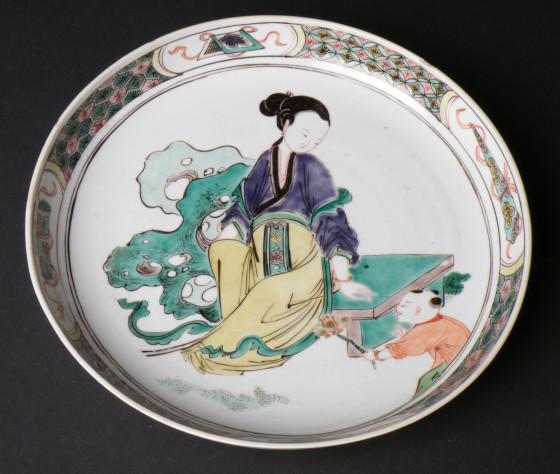
Chinese porcelain saucer dish decorated with a female figure sitting on a bench with a child offering her a lotus flower, Kangxi period (1662-1722), at Polesden Lacey, NT 1245638.1. ©National Trust/Jane Mucklow
As part of my research into Chinese wallpaper I have been noticing the elegant hairstyles of many of the female figures. I have been trying to work out whether certain hairstyles can be associated with certain periods, which in turn might help with dating wallpapers that we don’t have much documentation for.
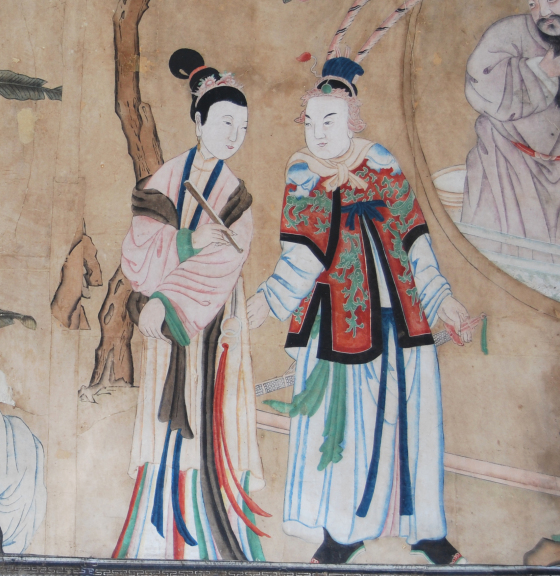
Female and male figure in a Chinese woodblock print used as wallpaper in the Chinese Dressing Room at Saltram, NT 872998. ©National Trust/Andrew Bush
I have facetiously dubbed one of the hairstyles ‘the triple gourd’, as the hair is piled up and tied in such a way that it forms three globular shapes, ending in a loop.
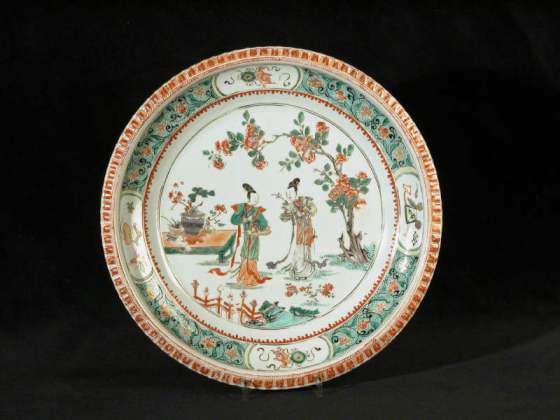
Chinese porcelain serving dish, part of a 25-piece dinner service, depicting two female figures in a garden, c. 1695-1710, at Shugborough, NT 1270511.2.2. ©National Trust/Sophia Farley
Another hairstyle could be called ‘the kidney bean’, as the hair rises up from the back of the head in one slightly curved vertical shape.
Both of these styles can be seen in mid-eighteenth-century wallpapers, but on porcelain they seem to appear earlier, perhaps from the late seventeenth century onwards.

Chinese painting on paper depicting female figures in a garden, used as wallpaper in the Study at Saltram, mid eighteenth century, NT 873000. ©National Trust Images/John Hammond
Some Kangxi-period (1662-1722) porcelain depicts female figures with more voluminous, globular hairstyles, which one might call ‘the persimmon’.
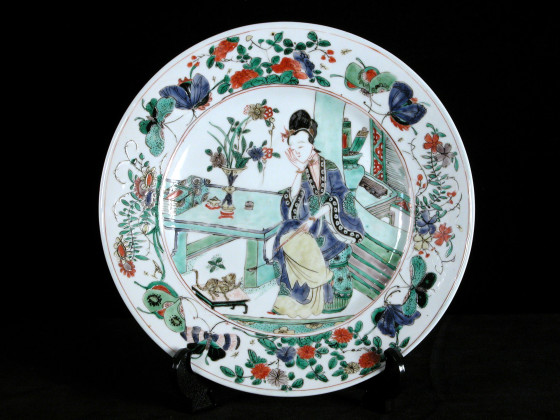
Chinese porcelain plate decorated with a lady seated at a table, her head resting in her hand, c. 1690-1720, collection of Captain George Francis Warre, given to the National Trust by Mrs. George Warre, 1961, at Dudmaston, NT 813530. ©National Trust/Claire Reeves
And in addition to those there appear to be other hairstyles, fabric hair coverings and a variety of hair ornaments as well as flowers or flower-shaped jewelry.
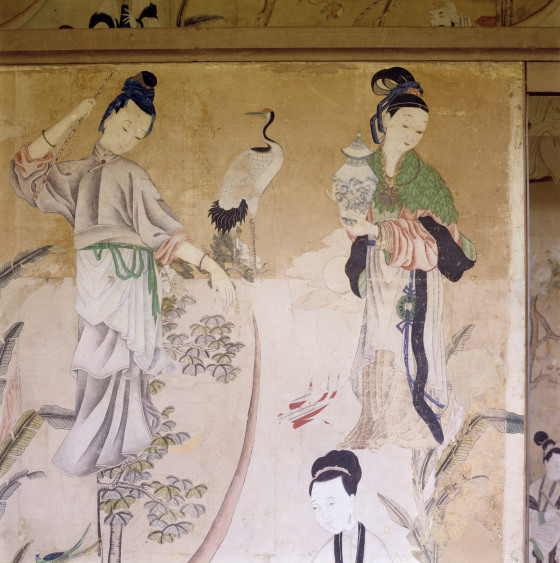
Chinese woodblock prints of female figures pasted onto a partition in the Chinese dressing room at Saltram, NT 872998. ©National Trust Images/Andreas von Einsiedel
Some of these styles may have been regional, while others may have been associated with particular classes or roles, but much of this remains unclear. Regardless of whether the descriptive names suggested above catch on, I think the time has come for a proper taxonomy of Chinese historical hairstyles.



